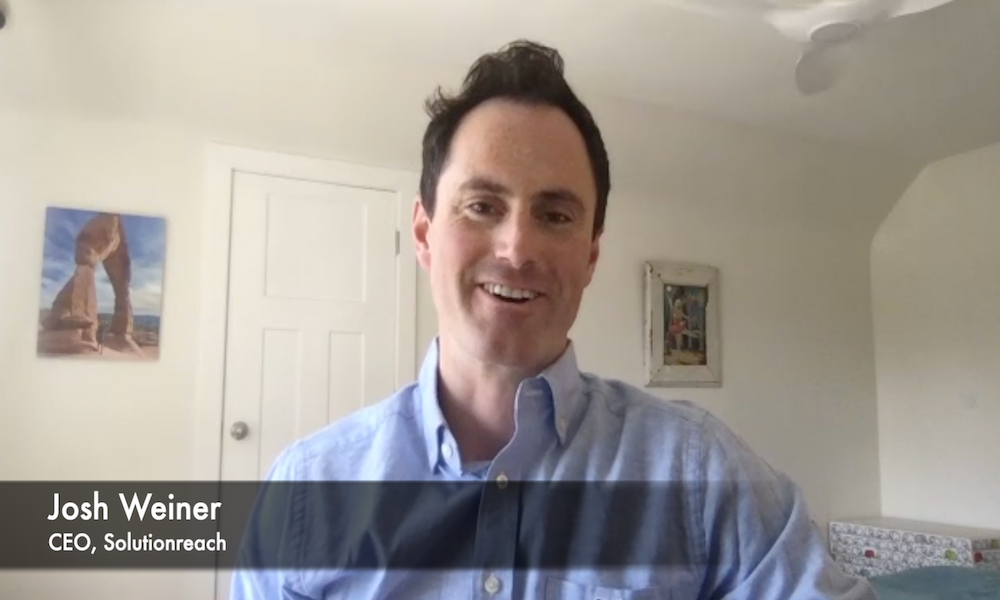The Tech Doctor: E-mailing Patients
Most patients would love to communicate with you via e-mail. But only a fraction of you allow this. What gives?
Considering the prevalence of e-mail in business and personal communications, you would think that by now it would be a standard element of doctor-patient interactions. But only about 25 percent of physicians communicate with their patients via e-mail, even though recent polls suggest that 80 percent of patients would like to e-mail their docs.
Why the disparity?
There are a number of reasons: concern about reimbursement for providing clinical services via e-mail, fear of becoming overwhelmed by a mountain of e-mail traffic, and of course, cost and security worries. Let’s take a look at each of these frequent justifications physicians use to avoid e-mail correspondence with their patients and determine whether electronically communicating with the people you treat makes sense for your practice.
First, let’s define our terms. There are two types of e-mail communication: unencrypted, which refers to the standard e-mail that the majority of Americans use, and encrypted e-mail, that is, e-mail sent via a system that uses a secure Web site and requires your patients to have user names and passwords to access your messages. Encrypted - or secure - e-mail works by sending patients an unencrypted e-mail notice that they have messages on a secure site that they can retrieve after providing their user names and passwords.
Secure Web sites are typically hosted by a third party (in many cases, they are offered by EMR vendors) for a monthly subscription fee. The fee usually includes a variety of patient communication services, such as automatically sending clinical test results and offering patients the ability to request appointments or prescription refills.
Recommendation: If you decide to incorporate e-mail communication into your practice, secure e-mail is worth the investment. It’s not only safer, reducing potential mishaps such as coworkers or family members inadvertently stumbling across sensitive messages, but it also offers additional features that make Internet-based communication with your patients more effective.
What about reimbursement?
Despite pockets of exceptions throughout the country, the majority of payers do not reimburse for patient-doctor e-mail communication. At one level, e-mail is not unlike a telephone call, which is not typically a billable event. However, insurers are starting to warm up to the idea of reimbursing for e-visits, which are structured e-mail encounters in which patients fill out a form online describing their symptoms to which a physician responds (often with the ability to attach patient education materials or other template-driven documentation). The rationale for reimbursement is that an e-visit is roughly equivalent to an office visit. That is, it often accomplishes the same things. Insurers that do cover e-visits currently reimburse physicians between $30 and $35 per “encounter,” a figure that includes a patient’s copay. Note that the American Medical Association, in its guidelines regarding e-mail communication, strongly suggests that an e-visit is not an appropriate manner in which to start a new physician-patient relationship; rather, it should be used as a follow-up tool after an initial in-office visit.
In the absence of universal insurance coverage, some physicians either charge patients directly for e-mail communication or offer it as part of a value-added service. And meeting this expressed patient demand can also help physicians reduce the number of patient phone calls their practices receive.
E-mail’s advantages
Communicating via e-mail offers a number of advantages over phone calls. It’s fast, allowing providers to address specific questions without spending time going off topic, which often occurs during phone calls. And e-mail leaves a documentation trail of patient encounters, allowing you to include detailed written instructions or guidelines - which can be very useful from the perspective of both quality of care and liability protection. Finally, e-mail is asynchronous, meaning both the sender and the receiver can respond according to their own schedules - and still maintain effective communication. (This is particularly convenient if you are assisting patients in different time zones.)
What about the possibility of becoming overwhelmed by huge volumes of unreimbursed e-mail traffic? While there are no studies that have specifically examined whether this fear is substantiated, there is anecdotal evidence that practices that have embraced e-mail communication with their patients have not been overwhelmed. UC-Davis Health System, which started offering online physician-patient consultations in 2001, averages about 2.5 messages per patient per year. Some smaller practices report even lighter traffic. However, it is reasonable to assume that e-mail traffic will increase as patients’ comfort level with electronically communicating with their physicians continues to grow.
Are your patients ready?
Is your specific patient population ready for e-mail? Unlike other healthcare IT decisions, such as whether to purchase an EMR, the decision to offer e-mail communication to patients depends on both the preferences of physicians and their patient population’s access to the Internet.
A recent study of physician-patient e-mail use by the Center for Studying Health System Change found that only 11 percent of rural practices use e-mail communication, compared with 26 percent of metropolitan practices. The same study indicates that there is less e-mail use among practices with a high volume of Medicaid and Medicare patients.
Other caveats: E-mail communication is definitely optimized if you have an EMR. For ad hoc requests, an EMR gives you immediate access to patients’ charts, so you can quickly review their requests in light of their medical records. And an EMR allows you to easily incorporate e-mail inquiries into individual medical records, again enhancing patient care and liability protection. To maintain an e-mail paper trail without an EMR, you must print out and file your e-mail encounters in your patients’ paper charts.
Let’s assume that you’re ready to incorporate e-mail correspondence into your practice: You have the “right” patient population, you have an EMR, and you may even have insurers in your area willing to reimburse you for e-visits. What’s next? As with any other new service, it’s essential that you establish policies and procedures to govern its use, including guidelines for patients (i.e., providing basic instruction, educating them about appropriate topics for e-mail correspondence, and telling them how quickly they can expect to receive a response) and internal practice guidelines (i.e., e-mail etiquette, routing clinical vs. administrative e-mails, privacy policies).
Numerous professional organizations set guidelines for appropriate physician-patient e-mail correspondence. One of the best references that I’ve found is from the AMA, titled, “Guidelines for Physician-Patient Electronic Communications.”
Bruce Kleaveland is president of Kleaveland Consulting, a management consulting firm focused on healthcare IT. Prior to forming Kleaveland Consulting, he was chief operating officer at a leading EMR company. He can be reached at 206 527 6633, bkleaveland@msn.com, or via editor@physicianspractice.com.
This article originally appeared in the March 2007 issue of Physicians Practice.
Cybersecurity breach reports low during the pandemic
September 7th 2020A new report from CI Security suggests cybersecurity breaches were lower during healthcare's rapid transition to virtual care throughout the pandemic. In this episode of Perspectives, we look at why this might be and other aspects of their report with CI Security's Healthcare Executive Strategist, Drex DeFord.







